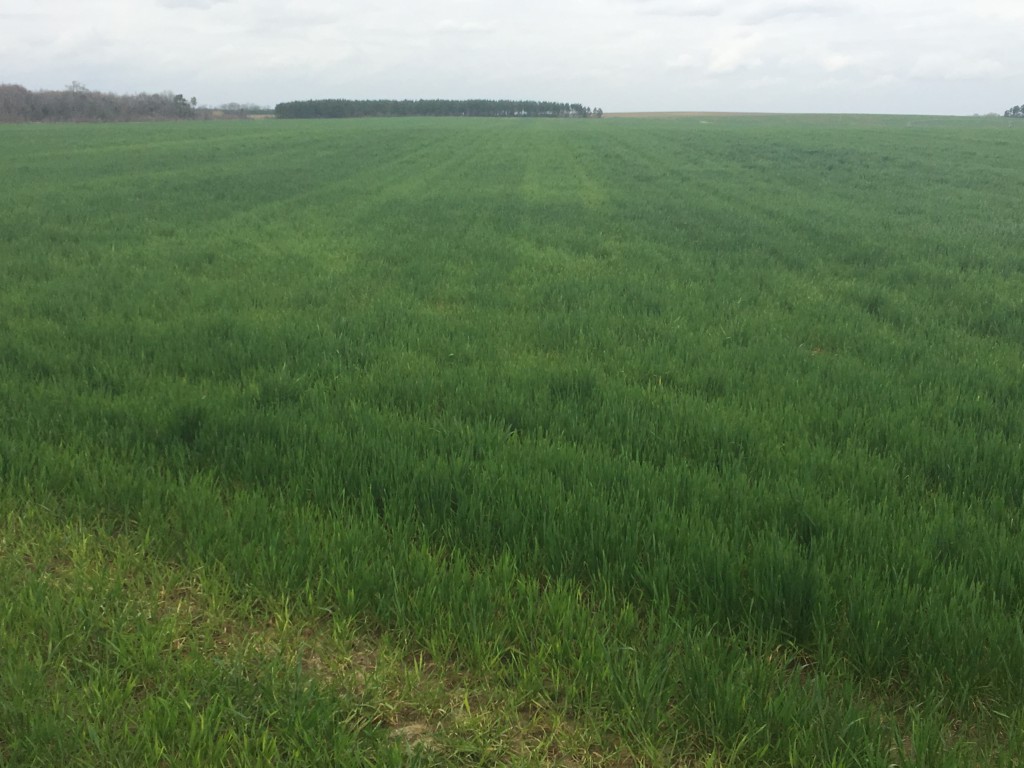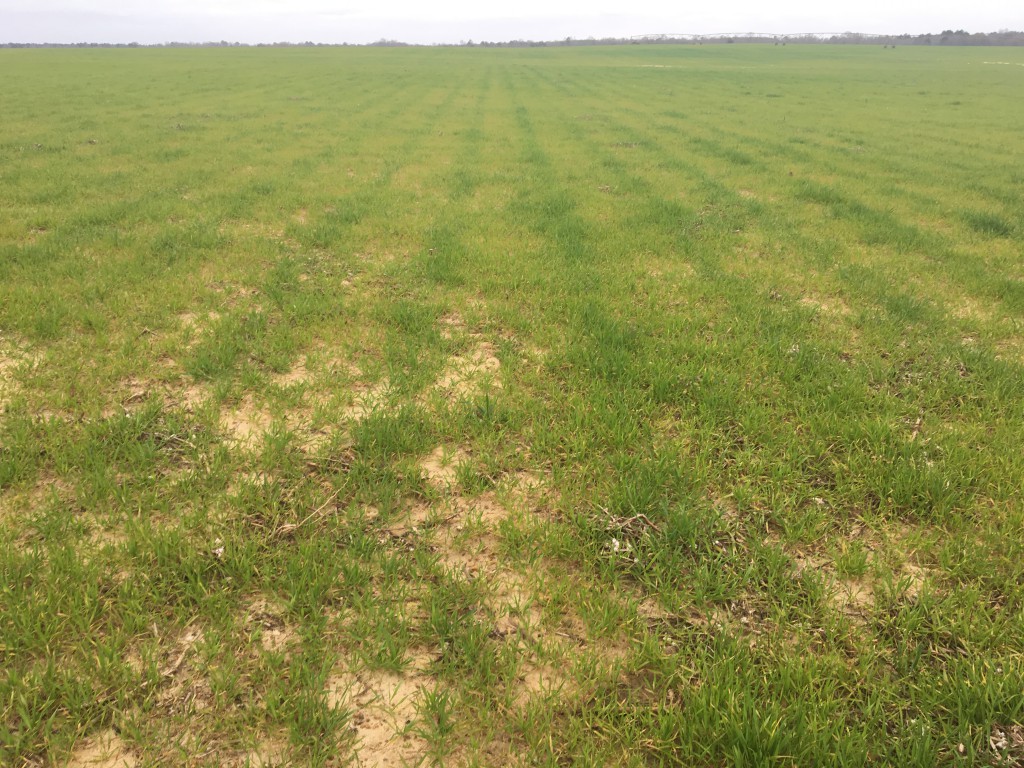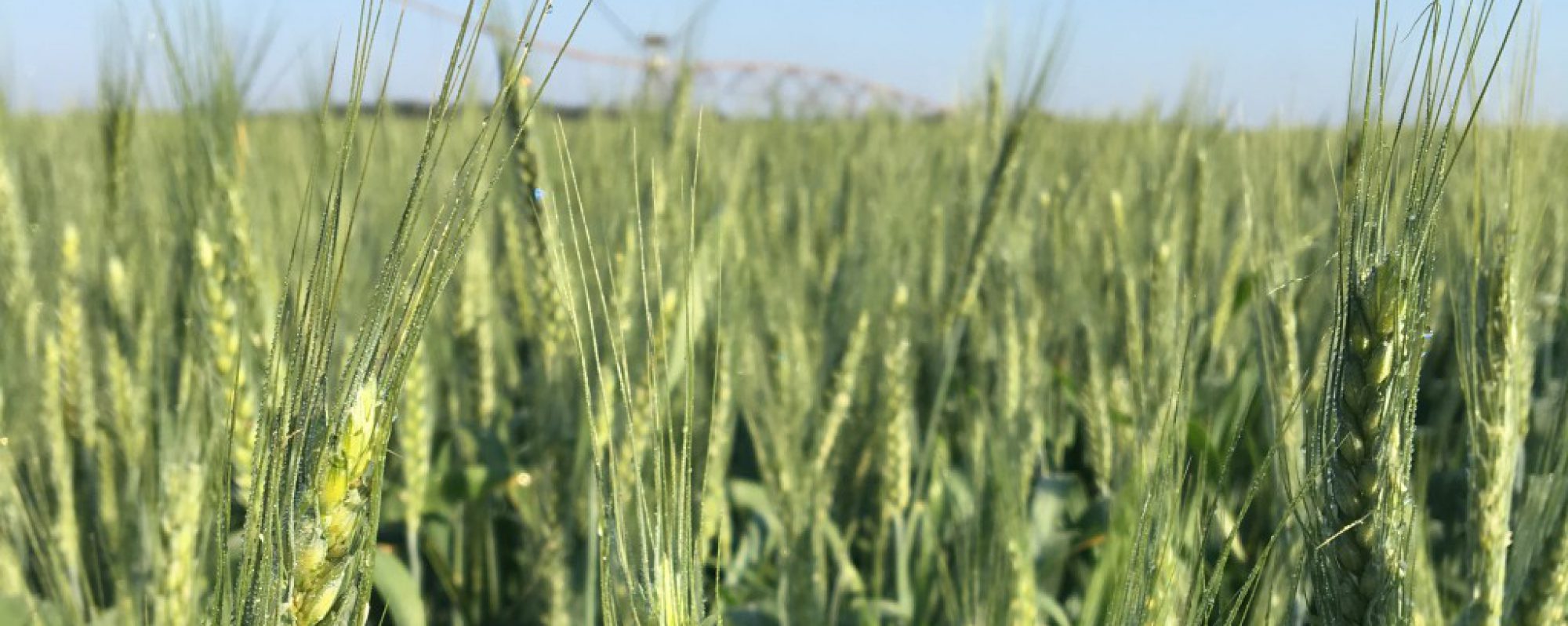Our winter wheat situation is unique and good at the same time. Lots of our wheat fields were planted in October for the purpose of cover crop. All of these were of course broadcast. Due to the timing and the look of other things, growers have decided to carry it out to grain. At this point, we are past our herbicide applications as well as sidedress fertilizer. Here is a look at wheat right now growing for grain.
Weed Control
You can see the dark rows were peanuts were planted here last year. This field was planted the first week of October. We’ve had good control of our broadleaf winter weeds. This field was treated with herbicide about the second week of January. I took this pictures on January 18th where we were checking to see how weed control was working. You can see too just how much the weather was working on the plants. Probably not much fertilizer up front. Lots of nutrient deficiency.


Fertility
At this growth stage, the plants are at high nitrogen uptake. In our area, we shoot for sidedressing nitrogen around February 14th or a little after. Depending on yield and soil potential, we are aiming for around 100 units of N for the season. Wheat doesn’t require as much N in the fall, so we put out nitrogen based on our previous crop (cotton, peanuts, corn, soybean). If we fertilize too much in the fall, we get too much growth and have winter injury. At the same time, we got to have something out there because research has shown that fall tillers account for about 85% of yield.
In late January, we start counting tillers in the field. If we are low in tillers (under 80), we need to put out some nitrogen to increase tiller production. The rest of put out right before stem elongation (Feb 14th). If we broadcast at planting, we only count in 1 square foot. Everything I’m counting is 50 – 60 tillers/sq foot. I think this is because these fields were initially grown for cover and not grain.
This is the same field as above last Friday, 1 week after sidedressing.


What is full tiller? Is it 3? is it 5? Probably the best way to determine when to cut off our herbicides is when small grain starts growing straight up, ‘erect growth’ stage. Most of our herbicides are not labeled to treat after this growth stage. In the above picture, we are still safe. In the next photos below, all of the wheat is entering erect growth.
The next 2 fields were sidedress 3 weeks ago and you can see the difference in color and growth.



Poultry Litter
This field was planted exactly a month after everything above (Nov 10th) and was fertilized with 2 tons/acre of poultry liter. We usually put out the rate of poultry liter based on N requirements of the crop. Even though on average, broiler liter has a 3-3-2 value (60lbs of N, 40lbs of P2O5, 40 lbs of K2O), 2 tons/acre is generally going to supply enough N for our small grain. It usually meets the phosphorus and potassium requirements even if testing low.

As mentioned above, when we come back with our nitrogen we want to make an application based on our tillers present. This graph from the UGA Wheat Production Guide shows how much nitrogen to apply compared to number of tillers.

